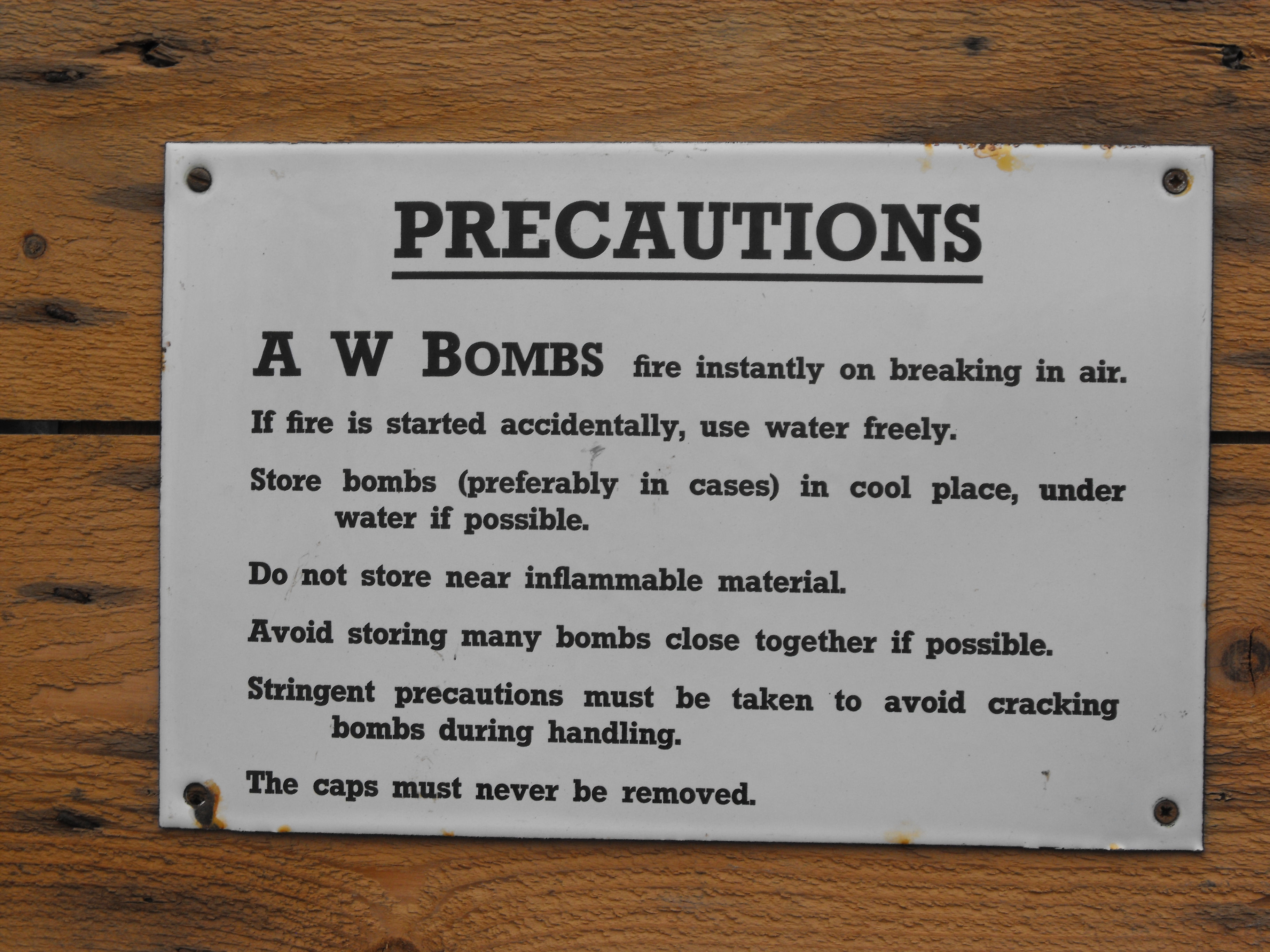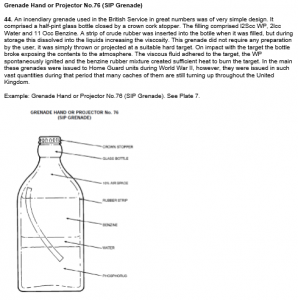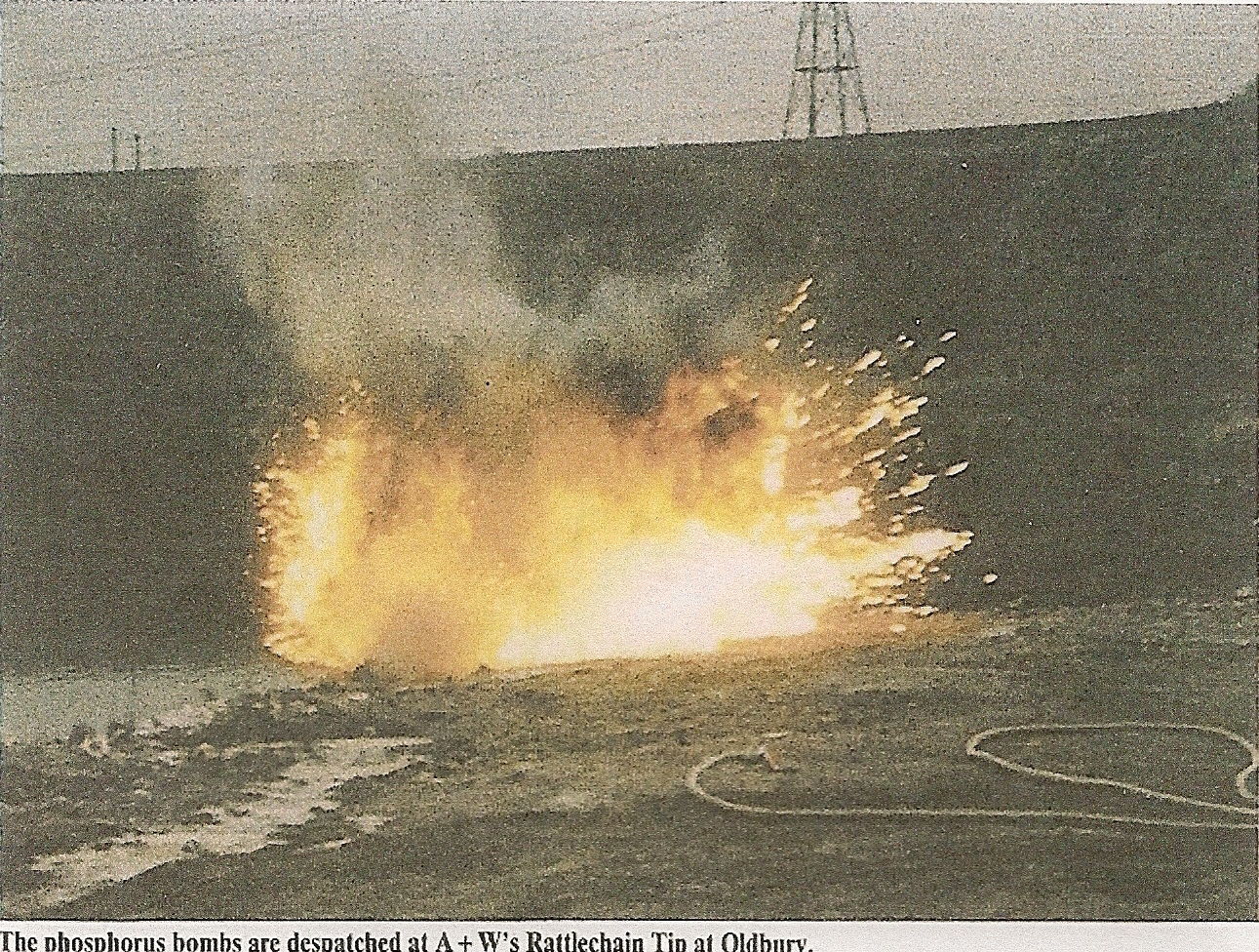I have looked extensively at the production, use and ultimate abandonment of these useless but highly dangerous white phosphorus filled half pint milk bottles, manufactured by Albright and Wilson during The Second World War for an anti-tank guerrilla warfare campaign that never transpired. Over seven million of them were produced between 1940-42 at Oldbury and satellite factories , and then dispatched to Home Guard units around the country in wooden boxes of 24.
All came with clear instructions for use, and some later designs were made to be fired from a gun known as the Northover projector. Many were used for demonstrations and training, but by 1943 it was clear that they were useless for anything but gathering dust.
Many had been buried under water or in back gardens, and then as time passed by, so people forgot like absent minded squirrels as to where they had buried them.
It is widely believed that many ended up destroyed at Rattlechain lagoon before AW became a private limited company, conveniently operating the site as a Government contractor for the ministry of supply before their own waste stream went into the drink.
But some AW bombs, or “the number 76 grenade” as they were officially known have been uncovered by accident only after many years from housing developments or curious individuals with metal detectors. Some have caused serious injuries to those unfortunate to have dug them up. The risks are both from breathing in the phosphorus pentoxide released as well as the danger of the phosphorus igniting and burning flesh. This one of three posts looks at some of the finds and how the incidents were dealt with by the authorities via the press articles of the day.
The dangers of these poison bottles falling into the wrong hands are demonstrated in the story below from The Scotsman 28th August 1945. “Gangsters” had stolen some AW bombs from an ARP store and had thrown them at a man causing serious burns.
This article from The Western Mail is dated 26th April 1946. It appears that a child had wandered down the basement of a local Government building and got burnt. This was once again an Air Raid Precautions store, indicating that perhaps they had taken charge of these incendiary scrap that the Home Guard could not handle. Obviously the AW bombs stored here were not “empty”.
A Portadown Times 28th September 1956 article reveals another type of white phosphorus containing grenade, not manufactured by AW, though the p4 contained within it would have been.
A boy had been burned by the number 80 grenade after it had been dumped and then retrieved in a River from a site used for incendiary training during the war.
A Birmingham Daily Post story from 30th May 1958 demonstrates how the supposedly German anti tank weapon ended up targeting a British bulldozer! Developments for housing uncovering these devices would become a very familiar theme going forward. Another AW bomb was taken away by firemen in a water filled drum.
These articles are further reminders of how dangerous these poisonous milk bottles were. Obviously Albright and Wilson’s labours would require a better solution to get rid of them.









